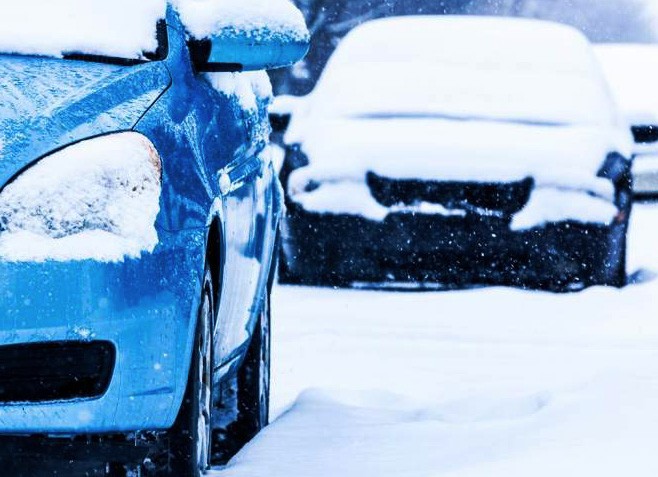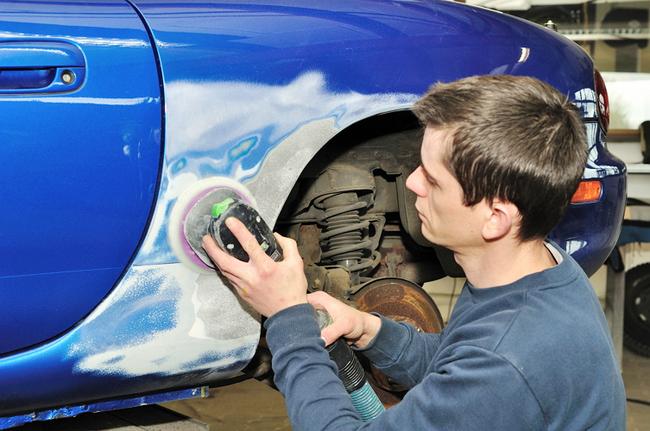
How to drive an SUV in winter
If you're from an area with consistently inclement weather, you know how difficult it can be to drive in the winter. Snow, ice and winter temperatures make driving the most severe. Sport utility vehicles or off-road vehicles may be larger and more durable vehicles, but they can slip and slide just like any other vehicle on the road. Keep reading to find out exactly how to stay safe while driving an SUV during the winter months.
- A warning: Never think you're safe just because you're in a big SUV. In the worst weather conditions, SUVs can lose control and slide like any other vehicle.
Part 1 of 2: Upgrade your tires
Even if your sport utility vehicle is equipped with all-wheel drive features, you should never rely on your regular tires for substantial traction.
Follow the steps below to learn how to upgrade your SUV tires for the winter season.
Step 1: Check Your Current Tires. Take a look at the tires you currently have and see if their treads are worn out. Check if the tires are inflated to the recommended pressure for the season in your area.
If the tires are not worn out or they are all season tires, you might consider driving an SUV in the winter with your current tires.
If your tires are worn or flat, or if you want to purchase better winter tires, continue to the next step.
- Functions: Make it a habit to check your tire pressure weekly in winter. This ensures that you never leave any tire problems unnoticed or unresolved.
Step 2: Choose and buy the right tires. Head to your local auto shop and look for tires marked "M+S". This marking means that the tires are suitable for use in winter conditions and can overcome snow and other slippery terrain.
Step 3: Change tires. Change your current tires and replace them with a new set suitable for winter.
If your local shop won't change your tires for you, or if your tire tread is slightly worn, call a qualified mechanic to have your tires replaced before the snow hits the ground.
Part 2 of 2. Safe winter driving in an SUV
Step 1: Be considerate of other vehicles. Even if you are an excellent driver and prepared for winter, the same cannot be said for everyone who is with you on the road. Try to avoid any other drivers or vehicles in your area very carefully, especially when the winter weather is more severe than usual.
While you should always be on the lookout for other vehicles on the road, it's important to remain vigilant during the winter season (especially in the evenings, during storms or when visibility is poor).
Try to look ahead regularly to notice reckless driving or accidents ahead of you. You should also regularly look in your rearview mirror and be aware of any dangerous drivers approaching you from behind.
- A warning: Stay as far away from reckless drivers as possible to prevent potential accidents or damage that could easily have been avoided.
Step 2: Watch your stop time. Heavier vehicles such as SUVs tend to weigh more than the average car and take longer to come to a complete stop. Therefore, it is important that you apply the brakes when you have sufficient distance and time to stop, especially when the roads are covered with snow and ice.
Keep more distance (than usual) between your SUV and the vehicle in front of you and start braking a few seconds earlier than usual.
Step 3: Refuel More Often. Luckily, the extra weight is useful when it comes to building enough traction in the snow. When your gas tank is full, your car gets even heavier.
Most SUVs are already equipped with all-wheel drive, and this requires more fuel. Since your SUV is likely to burn out a full gas tank much faster than normal, you will need to fill up your SUV more often in the winter.
It is recommended to keep the gas tank at least half full so that you always have extra fuel for traction and all wheel drive.
- Functions: Regular refueling also helps prevent water from condensing in the fuel tank. Condensation can mix water with your fuel, causing contamination that can lead to ruptures in your fuel tank or other hazards.
Step 4: Be Careful When Turning. It is also important that you be extremely careful when cornering in an SUV in winter. Larger vehicles such as SUVs already have a higher risk of rollovers and rollovers, and slippery road conditions only increase the risk.
The next time you need to turn in harsh winter weather, depress the brake pedal before entering the turn (by stepping on the brake pedal with your foot earlier than usual). Then take your foot off all pedals (both accelerator and brake) as you enter the turn. This will create more grip and allow your tires to perform properly during cornering despite poor road conditions.
Finally, slowly press your foot on the accelerator pedal until the end of the turn, trying to avoid oversteer, understeer or loss of control.
Loss of control when turning in winter is one of the most common ways to get into a snowdrift or pile of snow, so be careful when turning too!
- Functions: If you are a beginner, try to practice turning as well as slow braking in an empty parking lot or other secluded driving area. This will help you feel more comfortable when inclement winter weather conditions arise.
You must always take extra care and caution when driving on snow, ice, wind and sleet. Driving an SUV in the winter is not a bad decision, it just requires an attentive driver who practices safe driving practices and takes the recommended precautions.
You can also hire a certified mechanic, such as AvtoTachki, to check the safety of your SUV before driving long distances in winter or in harsh conditions.

